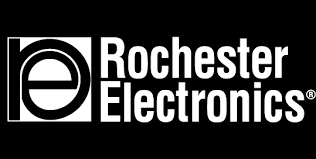Looking Back: Historic Volatile Memory Devices
A retrospective on our memories of volatile memory
Continuing our series on the legacy of memory devices, and following our history of non-volatile memory, we would now like to explore the evolution of volatile memory devices. Volatile memory stores data when a computer is on but erases it upon being turned off, however, non-volatile memory remains in a computer after it is shut off. The primary characteristic of volatile devices is that they require power to maintain their memory state. The two main device types are Static Random Access Memory (SRAM) and Dynamic Random Access Memory (DRAM.)
SRAM memory was invented in 1963 at Fairchild Semiconductor, as a follow-up to the IBM CMOS research of 1959, which led to the introduction of the Intel 3101 SRAM in 1969.
Prior to the development of extensive integration, the use of discrete, and easily accessed memory was fundamental to many systems. SRAM devices fulfilled this need. It used a straightforward address and data interface, as well as the ability to read and write to any of its memory locations.
From the 1970s through the 2000s, SRAM memory was widely used to provide high-performance solutions. Advancements added more complex synchronous interfaces that kept up with the increasing demands of high-speed microprocessors, DSPs, and FPGAs. Initially, there were numerous suppliers supporting the market, but it would eventually be dominated by several Japanese and Korean suppliers.
For modern designs and applications, the discrete SRAM market has passed its time. 21st century semiconductors and integrations have allowed suppliers to directly integrate SRAMs into other semiconductor devices. However, the usage of SRAMs in older long-lifecycle applications, such as avionics, defense, industrial, and medical applications provide ongoing demand. Infineon, Cypress, Renesas, ISSI, and Alliance still support the market, with Rochester Electronics well-positioned to support needs with inventory, including both active and obsolete SRAM options.

DRAM is the other prominent type of volatile memory. This memory predates the semiconductor revolution and can be traced as far back as the cryptanalytic machine codenamed “Aquarius,” used at Bletchley Park during World War II. Here, a hardwired dynamic memory paper tape was read, its characters were remembered in a dynamic store on a large bank of capacitors, which were either charged, representing a “1”, or not charged, representing a “0”. Since the charge would gradually leak away, a periodic pulse was applied. Interesting fact, this mechanism became known as the machine that broke the German Enigma code.
The idea of using a capacitive charge helped lead to a silicon solution for DRAM. In 1964, Arnold Farber and Eugene Schlig, working for IBM, created a hardwired memory cell, using a transistor gate and tunnel diode latch. It was replaced with two transistors and two resistors solution, which became known as the Farber-Schlig cell. In 1965, IBM created a 16-bit silicon memory chip, comprised of 80 transistors, 64 resistors and 4 diodes. Toshiba used a 180-bit DRAM built from discrete bipolar memory cells in its Toscal BC-1411 electronic calculator.
In 1966, IBM progressed the technology to a MOS (Metal Oxide Semiconductor) process to create an alternative to SRAM. In 1969, this was then used by Advanced Memory Systems (the company merged with Intersil in 1976) to develop a 1024-bit chip which had a limited release to Honeywell, Raytheon, and Wang Laboratories.
The development of the DRAM was the beginning of a constant process of advancement that continues to this day. In 1970, Honeywell engaged with Intel to create a three-transistor cell DRAM, that lead to the first commercially available device in the 1k-bit Intel 1103. In 1973, Mostek released a 4K-bit, using multiplexed row and column lines, following it with the 16K-bit MK4116 in 1973.
DRAM densities continued to increase, reaching 64K-bit in the early 1980s. It had found a place in the market achieving top metrics for price per bit, however, the product was becoming more commoditized, and in 1985 Gordon Moore of Intel decided to withdraw Intel from the DRAM market. Other suppliers continued to support the products and over time suppliers such as Fujitsu, Hitachi, Mitsubishi Electric, and Toshiba dominated the market.
DRAM technology continued to advance into the 21st-century. Densities are now as high as 64G-bit. Constant technology advancements helped drive DRAM with a continuous reduction in cost-per-bit. These same advancements allowed for constant improvement in performance, while also minimizing the power-per-bit impact. The performance improvements were realized in applications through multiple generations of interface changes as referenced below.
- EDO
- Fast Page Mode
- SDRAM
- LPSDRAM
- DDR, DDR2, DDR3, DDR4 and DDR5
- LPDDR, LPDDR2, LPDDR3, LPDDR4 and LPDDR5
Although these interface changes were welcomed by consumers and high-performance applications with short product cycles, other applications dependent on a long-term stable supply are not as accepting of these constant changes. Current suppliers in the markets, such as Samsung, SK Hynix, Micron, Winbond, and ISSI, are each targeting segments of the market, with some providing the latest generations and others focused on the legacy products.
Please continue to follow Rochester and look for future discussions on specialty memories and on low-density embedded storage solutions. Rochester Electronics is the authorized source for active and end-of-life volatile memory devices. Our volatile memory portfolio covers multiple generations of SRAMs and DRAMs from standard low-density devices through high-performance synchronous DDR and high-density devices.
Learn more about our Memory Solutions:
Supporting Long-lifecycle Memory Applications
Subscribe to Our Newsletter
Get the latest news, articles, and resources in your inbox weekly.
Manufacturers




